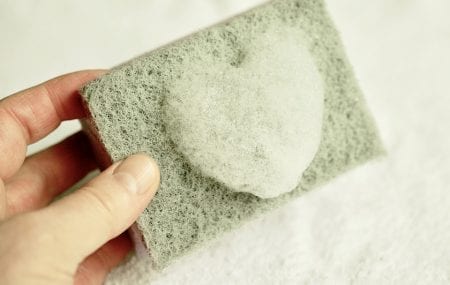 Thanks to annoying advertising, we know how many microbes live under the rim of the toilet, but the most important hotbed of these unpleasant creatures in our house is not he, but things that, at first glance, seem completely harmless to us.
Thanks to annoying advertising, we know how many microbes live under the rim of the toilet, but the most important hotbed of these unpleasant creatures in our house is not he, but things that, at first glance, seem completely harmless to us.
Kitchen Sponge for washing dishes
The dirtiest thing in our everyday life is a dishwashing sponge: there are 200 times more germs on it than in a toilet bowl. After each “water procedure” for cups, pots and plates, a lot of remains of food and fat remain hidden on the eye, and with them – a variety of bacteria, among which an honorable place is occupied by E. coli. About what can end the meal, served on dishes that are poorly rinsed after processing such a sponge, any educated person knows: at least we are guaranteed indigestion, and as a maximum – some kind of trouble like dysentery.
What to do in this situation, given that the dishwasher does not solve this problem to the end – will not you start it, if you need to rinse a couple of cups or one plate? To change sponges every day, even taking into account their cheapness, is also not an option. But you can literally put a sponge for one minute in a microwave oven – so we disinfect it. The microbes also die in the dishwasher – high temperatures do not leave them the chance to survive. Another way to destroy bacteria is to leave a sponge for the night in a jar with a solution of washing soda, which copes with them no worse than microwave radiation and hot water – that’s exactly how our grandmothers fought against microbes, which had no modern technology wonders.
Cutting board
The second – according to the account, but not in importance – the place is occupied by a cutting board, on which there are as many microbes as there are on the dishwashing sponge. And it does not matter at all whether you prefer a board of what material – natural or artificial, it does not become less bacteria on it. However, lovers of wooden boards risk much more than those who use plastic or glass in the kitchen: wood is easily “injured” by sharp knives and hammers for chops, it is very difficult to clean these cracks and dents very badly, the bacteria are simply swarming.
But, since you can not do without cutting boards in the kitchen, remember the simple rules that must be followed when using them.
First, get a few boards – separately for meat, fish, vegetables and fruits, cheese and bread, so you will reduce the degree of contamination of each of them.
Secondly, once a few days, treat the boards of bacteria – scald them with boiling water, or even better – with a hot solution of wine vinegar (it copes with microbes with a bang) and, like a sponge, wipe with soda solution.
Kitchen towels
On the third place of our sad rating – kitchen towels, and it is not surprising: in the kitchen, we cling to them, sometimes not having time to wash their hands. As a result, a variety of bacteria settle there, which feel great on a damp cloth – kitchen towels do not always dry after use.
Fighting such pollution is quite simple – kitchen textiles should be washed as often as possible. And even better – use paper towels (it’s very easy and hygienic), good, there is no shortage in them now.
Image source: congerdesign



